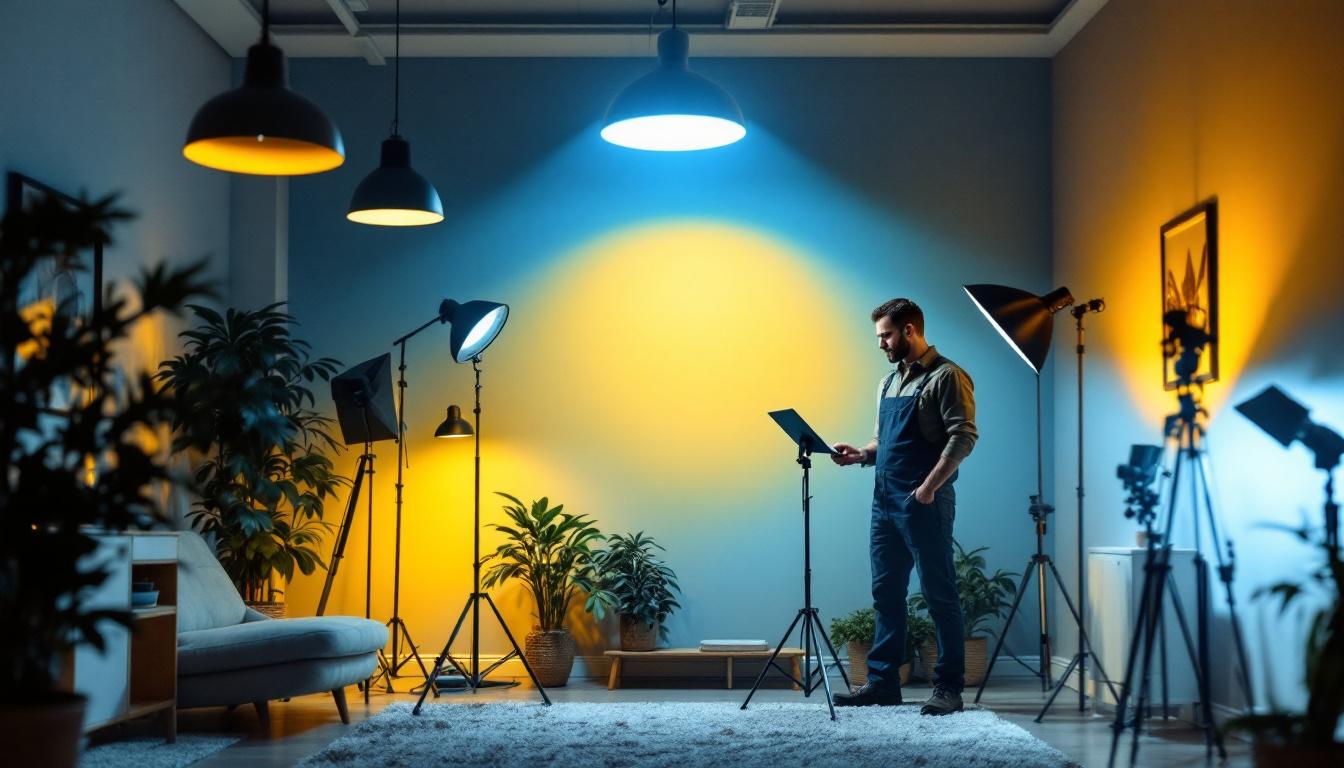
In the world of lighting design, understanding lumens is crucial for creating effective and efficient lighting solutions. For lighting contractors, knowing how many lumens are needed to adequately light a room can make a significant difference in both project outcomes and client satisfaction. This article delves into the importance of lumens, how to determine the appropriate amount for various spaces, and the benefits of mastering this knowledge for lighting contractors.
Lumens are a measure of the total amount of visible light emitted by a source. Unlike watts, which indicate energy consumption, lumens provide a direct understanding of light output. This distinction is essential for lighting contractors as it allows for more precise planning and execution of lighting designs. By focusing on lumens, professionals can ensure that the lighting not only meets aesthetic goals but also functional needs, enhancing the overall experience of the space.
When selecting light fixtures, it’s essential to consider the lumen output in relation to the space being illuminated. Different rooms serve different purposes and, therefore, require varying levels of brightness. For instance, a kitchen may need brighter lighting for tasks like cooking and food preparation, while a bedroom may benefit from softer, more ambient lighting. Furthermore, the type of activities conducted in a room can dictate the need for adjustable lighting solutions, such as dimmers or multi-layered lighting systems that can adapt to different times of day or occasions.
Several factors can influence how many lumens are necessary to effectively light a room. These include the room’s size, color scheme, and the activities that will take place within it. Darker colors absorb more light, necessitating a higher lumen output to achieve the desired brightness. Additionally, the layout and design of the space can affect how light is distributed, further impacting lumen requirements. For example, an open-concept living area may require more lumens than a similarly sized enclosed room due to the need for light to reach various zones and ensure a cohesive ambiance throughout the space. Moreover, the height of the ceilings can also play a critical role; higher ceilings may require fixtures with higher lumen outputs to ensure that light reaches the intended areas effectively.
Determining the appropriate number of lumens for a room involves a straightforward calculation based on square footage and the recommended lumens per square foot for various types of spaces. This section outlines how to perform these calculations effectively.
As a rule of thumb, different rooms have different lumen requirements. For example, living rooms typically require about 100-200 lumens per square foot, while kitchens may need 300-400 lumens per square foot to ensure adequate task lighting. Understanding these guidelines helps contractors create a well-lit environment tailored to the specific needs of the space. Additionally, areas such as bathrooms and home offices may have unique lighting needs; bathrooms often require around 200-300 lumens per square foot to provide sufficient illumination for grooming tasks, while home offices may benefit from 100-150 lumens per square foot to reduce eye strain during extended work sessions. This nuanced approach to lighting ensures that each space is not only functional but also comfortable for its intended use.
To calculate the total lumens needed for a room, begin by measuring the room’s length and width to determine its square footage. Multiply the square footage by the recommended lumens per square foot for the specific room type. For example, a 200 square foot living room requiring 150 lumens per square foot would need a total of 30,000 lumens (200 x 150). It’s also important to consider the color of the walls and furnishings, as lighter colors reflect more light and can reduce the overall lumen requirement. Darker colors absorb light, which may necessitate additional lumens to achieve the desired brightness. Furthermore, the type of lighting fixtures used can also impact the effectiveness of the lumens produced; for instance, LED lights are generally more efficient and provide a higher lumen output per watt compared to traditional incandescent bulbs. Therefore, when planning your lighting scheme, take into account not only the total lumens required but also the quality and placement of the light sources to create a harmonious and inviting atmosphere.
For lighting contractors, mastering the art of lumen calculations offers numerous advantages. From enhancing project efficiency to improving client relationships, understanding lumens can significantly impact a contractor’s success.
Accurate lumen calculations lead to more efficient project planning. By knowing the exact lumen requirements, contractors can select the appropriate fixtures and avoid over- or under-lighting a space. This precision helps streamline installation processes and reduces the likelihood of costly adjustments later in the project. Furthermore, with precise calculations, contractors can optimize energy usage, leading to lower operational costs for their clients. This not only enhances the overall value of the project but also aligns with the growing demand for sustainable and energy-efficient solutions in modern construction.
Clients expect their spaces to be well-lit and functional. By delivering on these expectations through careful lumen planning, contractors can enhance client satisfaction. A well-lit room not only looks appealing but also serves its intended purpose effectively, leading to positive feedback and potential referrals. Additionally, when clients see that their lighting needs have been thoughtfully addressed, it fosters a sense of trust and reliability in the contractor’s expertise. This can lead to long-term relationships, as satisfied clients are more likely to return for future projects or recommend the contractor to others in their network.
As the lighting industry evolves, staying informed about best practices, including lumen calculations, is essential for contractors. By demonstrating expertise in this area, contractors can differentiate themselves from competitors and position their services as valuable and knowledgeable. This competitive edge can lead to increased business opportunities and a stronger reputation in the industry. Moreover, as technology advances and new lighting solutions emerge, being adept at lumen calculations allows contractors to adapt quickly, ensuring they can offer the latest innovations to their clients. This adaptability not only enhances service offerings but also positions contractors as leaders in the field, capable of tackling complex projects with confidence and skill.
Even seasoned lighting contractors can make mistakes when it comes to lumen calculations. Being aware of common pitfalls can help ensure that projects are executed smoothly and successfully.
One of the most significant mistakes contractors can make is failing to consider the room’s intended use. A space designed for relaxation, such as a bedroom, requires different lighting than a workspace, like an office. Ignoring these functional differences can lead to inadequate lighting and dissatisfaction. For instance, bedrooms benefit from soft, warm lighting that creates a calming atmosphere, while offices thrive under bright, cool lighting that promotes alertness and productivity. Understanding the psychological effects of light on mood and behavior is crucial for creating spaces that not only look good but also feel right.
Even with the correct lumen output, poor fixture placement can result in uneven lighting and shadows. Contractors should carefully plan the layout of fixtures to ensure that light is distributed evenly throughout the space, enhancing both aesthetics and functionality. Additionally, the height at which fixtures are installed can significantly impact the quality of light. For example, pendant lights hung too low can create glare, while those hung too high may fail to illuminate the intended area effectively. It’s also important to consider the interaction between natural light sources and artificial lighting, as this can further influence the overall ambiance and usability of the space.
The lighting industry is continuously evolving, with new technologies and trends emerging regularly. Staying updated on these innovations can further enhance a contractor’s ability to provide effective lighting solutions.
Smart lighting systems allow for greater control over brightness and color temperature. These systems can be programmed to adjust based on time of day or occupancy, providing energy savings and enhanced user experience. Incorporating smart lighting into projects can be a selling point for clients looking for modern solutions.
With growing awareness of environmental issues, energy-efficient lighting solutions are increasingly in demand. LED fixtures, for instance, offer high lumen output with lower energy consumption. By promoting sustainable lighting options, contractors can appeal to eco-conscious clients and contribute to a greener future.
Understanding how many lumens are needed to light a room is a fundamental skill for lighting contractors. By mastering lumen calculations and considering factors such as room functionality and fixture placement, contractors can create well-lit spaces that meet client needs and expectations. Moreover, staying abreast of industry trends and innovations can further enhance a contractor’s service offerings, ensuring continued success in a competitive market.
In summary, the knowledge of lumens is not just a technical requirement; it is a powerful tool that can elevate the quality of lighting design and installation. By investing time and effort into understanding this crucial aspect of lighting, contractors can enhance their professional capabilities and deliver exceptional results for their clients.
Ready to take your lighting projects to the next level? At LumenWholesale, we provide lighting contractors with the high-quality, spec-grade lighting products you need at prices that can’t be beaten. Say goodbye to local distributor markups and hello to our extensive selection that meets the highest industry standards. With free shipping on bulk orders, you’ll enjoy the ultimate convenience and affordability for all your lighting needs. Elevate your lighting designs with the best value in wholesale lighting. Discover our products today and light up your spaces with confidence and cost-efficiency.

Discover the key challenges lighting contractors face when installing external house lights, from design complexities to weather-related issues.
Discover essential tips and common pitfalls to avoid when installing a stone mailbox with integrated lighting.

Discover how LED strip lamps are revolutionizing the lighting industry and impacting contractors’ profitability.

Discover how ultraviolet sanitizers can revolutionize the lighting industry by cutting costs and enhancing efficiency for contractors.